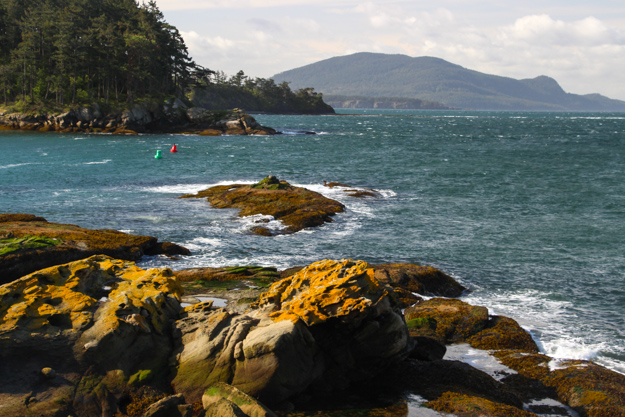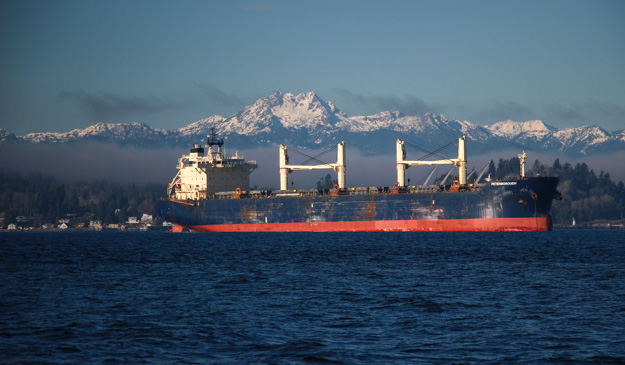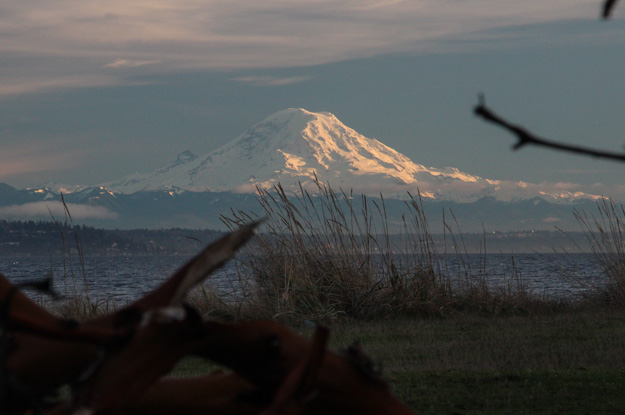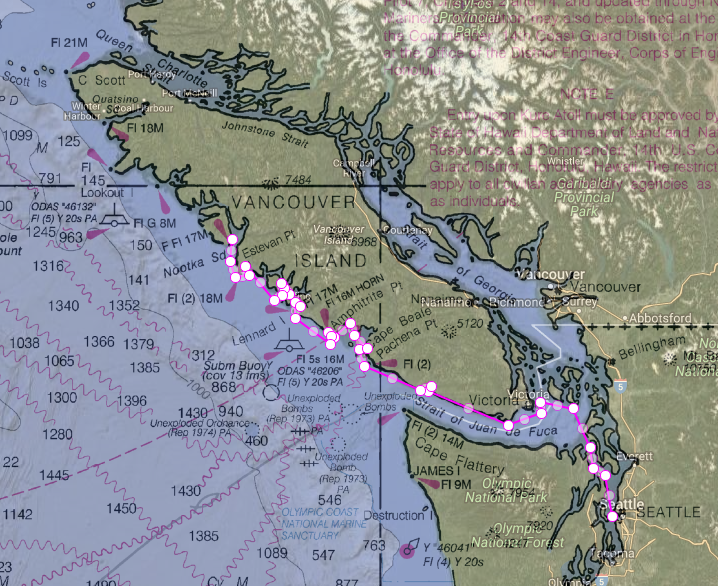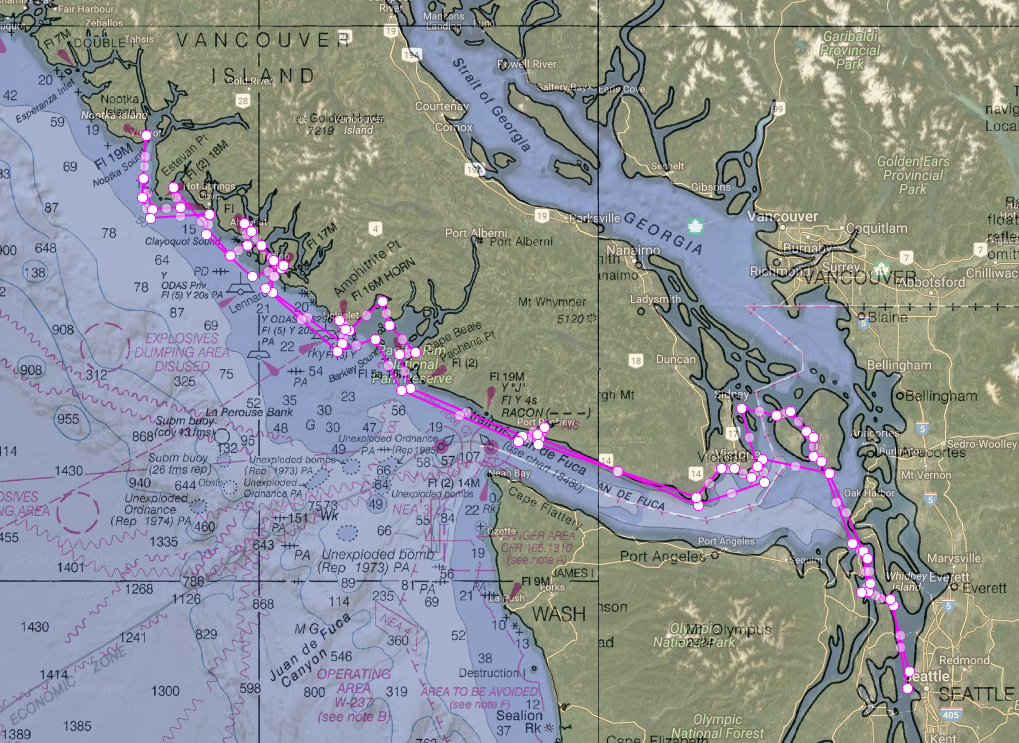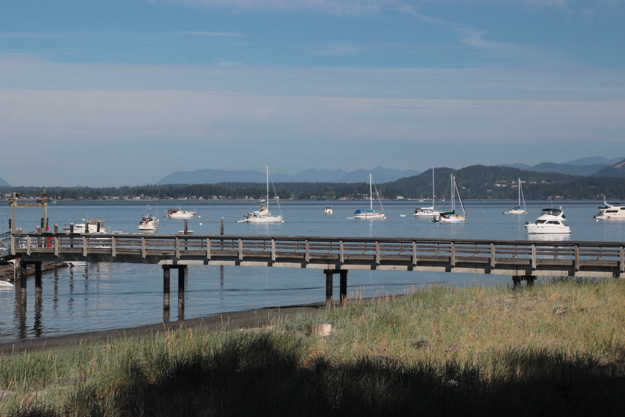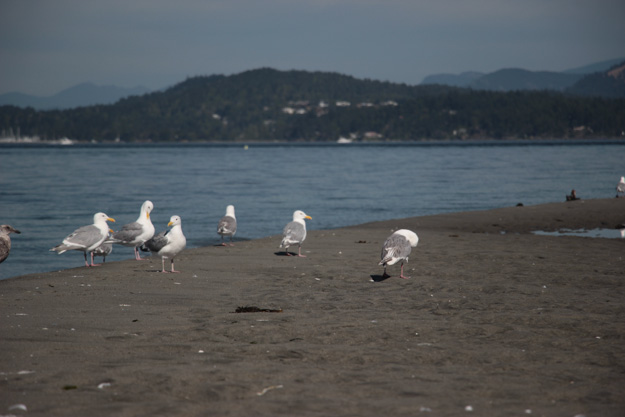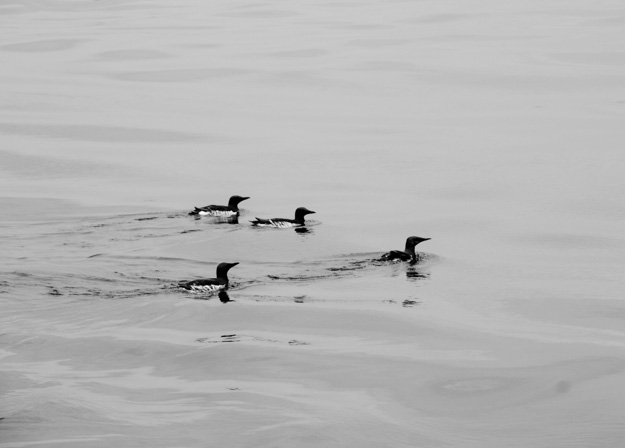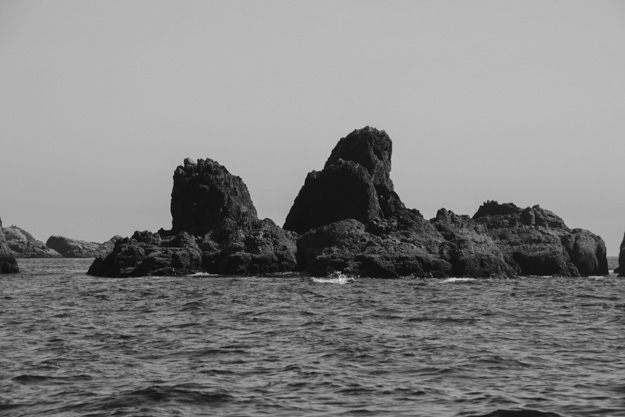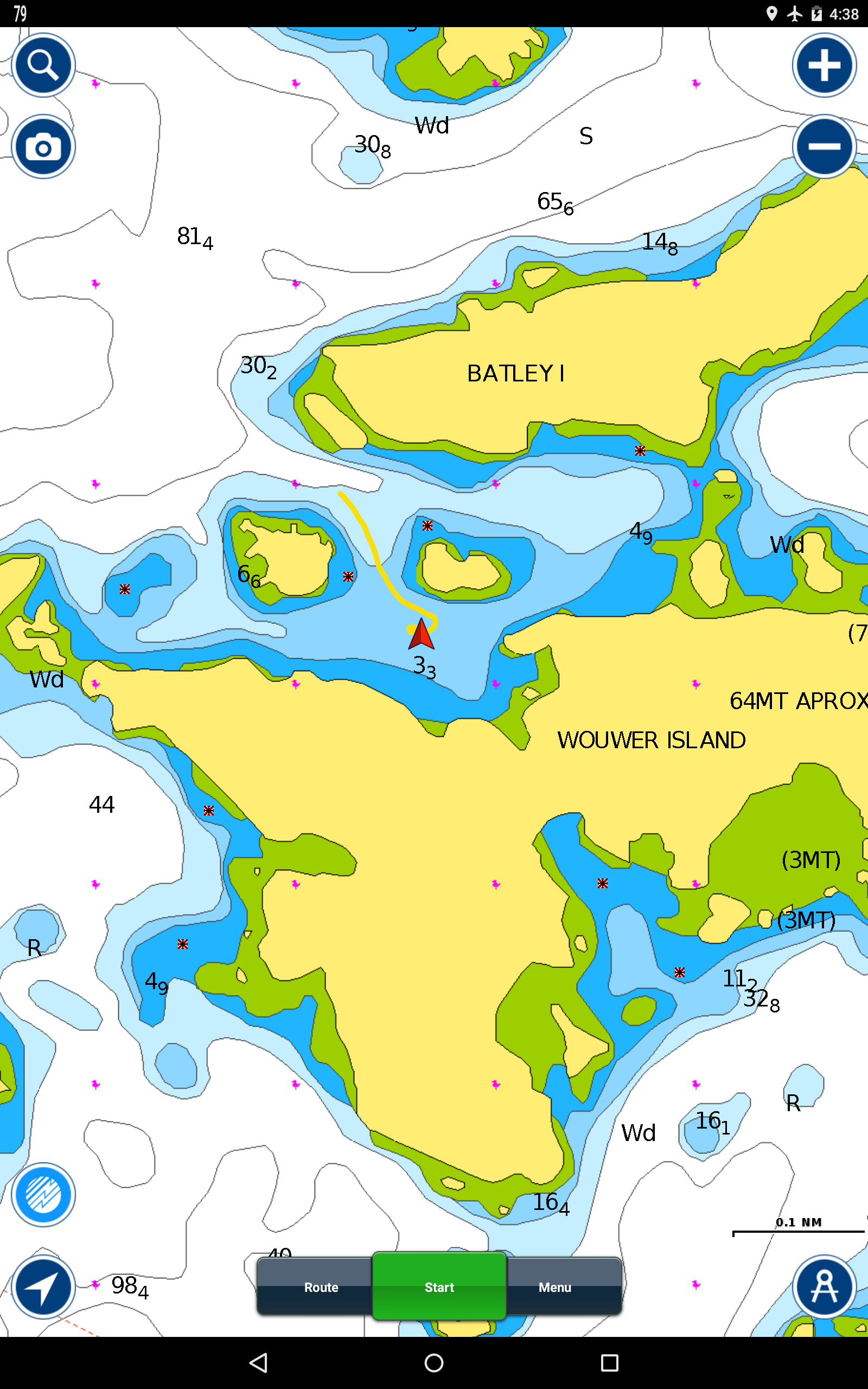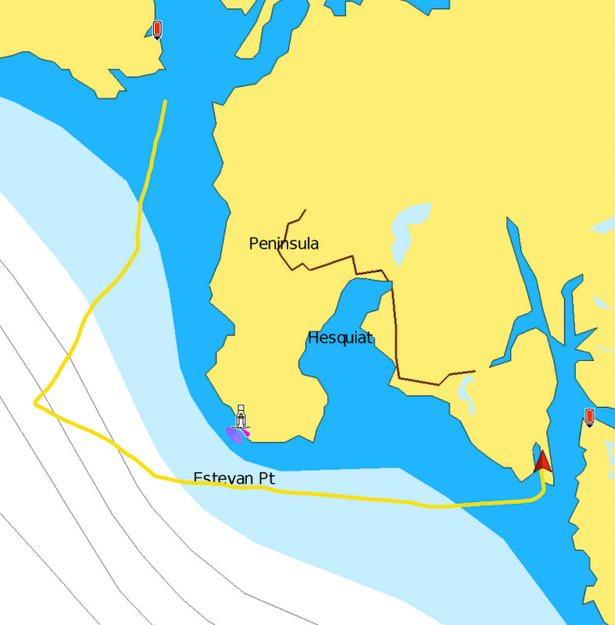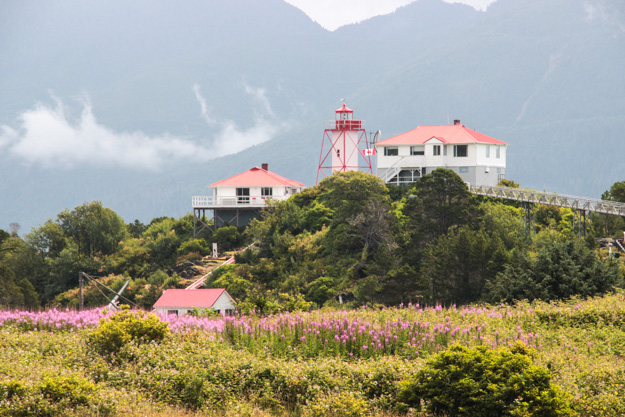Week two of our July cruise began in Ucluelet, at the northwestern end of Barkley Sound. We anchored out in front of the main marina, after first filling our water tank at the 52 Steps dock, and emptying the holding tank at the pumpout station in the marina ($5 CDN). On the way into the harbor we saw a huge group of eagles (15-20) on the eastern shore, feeding on a salmon head.
We had dinner reservations for a date night at Norwoods, Ucluelet’s fine dining restaurant (a tiny town like this only has one). Everything was really good, and we’d recommend the steak and halibut entrees, and I was really impressed by Category 12 Brewing’s dry-hopped sour ale.
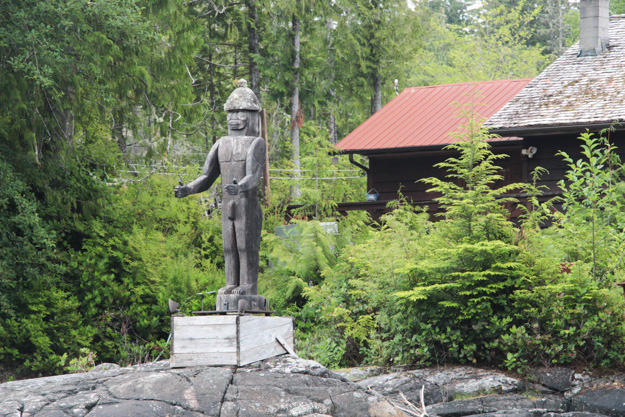
A First Nations statue outside Matilda Inlet
Attempting to go to Tofino and the (accidental) DSC Distress Call
Monday morning we disassembled the Portabote for storage on deck, since we knew there was a chance of big, rough waves on the way to Tofino. The forecast was iffy – a gale warning for Vancouver Island South, but that forecast region is enormous, and it sounded like the gale was primarily for the northern part (north of Estevan Point by Hot Springs Cove). We’re also often skeptical of Canada’s marine forecasts because we’ve found they frequently overestimate the wind compared to US forecasts – this time that may have been a mistake though.
We were prepared for some challenging upwind sailing, but the waves were the main concern. I was closely monitoring the reports from La Perouse Buoy, Lennard Island lighthouse station off Tofino, Estevan Point, Tofino Airport, and Cape Beale. We left Ucluelet early with very mild conditions in the harbor (2-4 kts SW) and Cape Beale reporting SW 8-10, which would be very good for us if it made it to Ucluelet. But as soon as we turned the corner out of the harbor, there was about 10 kt NW, but the waves quickly became the real problem.
The 6-9 foot waves from further out on the ocean were hitting this 50-60 foot depth region and stacking up into 5 foot standing waves. Standing waves are nothing like ocean swell – they’re unbelievably closely spaced waves that your boat doesn’t roll over, it dives over. Our previous 6 kts motoring speed got squashed to 2-3 kts by these waves, and the boat was pitching so much that I buried the bow, despite steering as best I could. These were probably the worst waves I’ve ever seen while going against them (going *with* the waves is much easier, and we’ve gone with comparable waves in the Strait of Georgia and Queen Charlotte Strait).
Continue reading →

